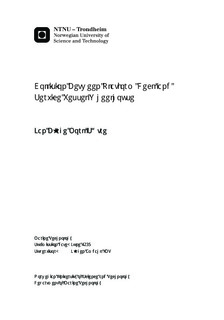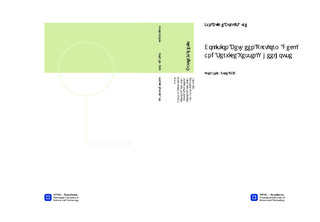| dc.description.abstract | Collisions between ships and oshore structures are rarely occurring events, butpose a constant threat to the safety at sea. Observed trends in recent years hasshow that the size of both oshore structures and servicing vessels is increasing,making it possible for an oshore structure deck or module to pass above thebow and hit the superstructure and bridge of the vessel. An accident like thiscould have severe consequences.The superstructure of ships is typically considerably less stiened than the sub-merged part of the hull, making the resistance to deformation equally small.Passenger cabins are typically placed in the forward part of the superstructureof ships, and an impact to this part could be a direct cause of fatalities.A secondary eect, if the bridge should be partly or completely destroyed, wouldbe the reduced ability to control the ship. If the vessel was get stuck underneaththe platform, it could lead to considerable secondary damage to both the oshore-and ship structure, as well as damage to e.g. a production riser connected to theplatform.The external mechanics of collisions may be analyzed by utilizing the principleof conservation of energy and momentum. A moving vessels kinetic energy isdissipated by absorption of strain energy in both the struck and striking structure,as well as viscous damping by the surrounding sea, and transfer of momentumto kinetic translational and rotational energy.The internal mechanics on the other hand are hard to determine accurately with-out detailed and time consuming nite element analyses.Principles behind non-linear nite element analysis is presented, as well as dif-ferent available solution techniques and their benets and disadvantages.In this thesis, collision scenarios for a large oshore service ship superstructureare treated by non-linear nite element analysis. The ship is set to collide with a simplied Ultra Deep-Water semi-submersible drilling rig, and an aluminiumliving quarter of a jacket platform.A detailed model of the superstructure of a 13 600 metric ton oshore servicevessel is modeled. In addition, the hull of the ship is modeled as rigid in or-der to more easily apply global mass properties, as well as restoring forces andmoments.Two oshore structure models are created. The semi-submersible is modeledwith representative stiening and represented as an equivalent box-girder. Theliving-quarter is modeled in the likeness of that found on the Kvitebjrn jacket.The LQ is modeled as extruded aluminium proles mounted atop a sti beamlattice.Five collision scenarios are successfully tested. All runs utilize prescribed dis-placement settings. Ship vs semi-like rigid plate. Ship vs deformable semi. Ship vs deformable semi. Bridge impact. Ship vs living quarter. Vertical wave motion impact. Ship vs living quarter. Horizontal bridge impact.It was discovered that the wheelhouse has inferior crushing resistance comparedto the remaining hull. Great resultant forces are observed in collisions wherethe semi hits near the forecastle deck due to the large contact area, whereasthe upper decks are greatly reduced capacity. In all analyzed load cases, theship strain energy dominates the energy equilibrium. Results show that strengthdesign can be used as a slightly conservative assumption in most of the analyzedsituations. | nb_NO |

